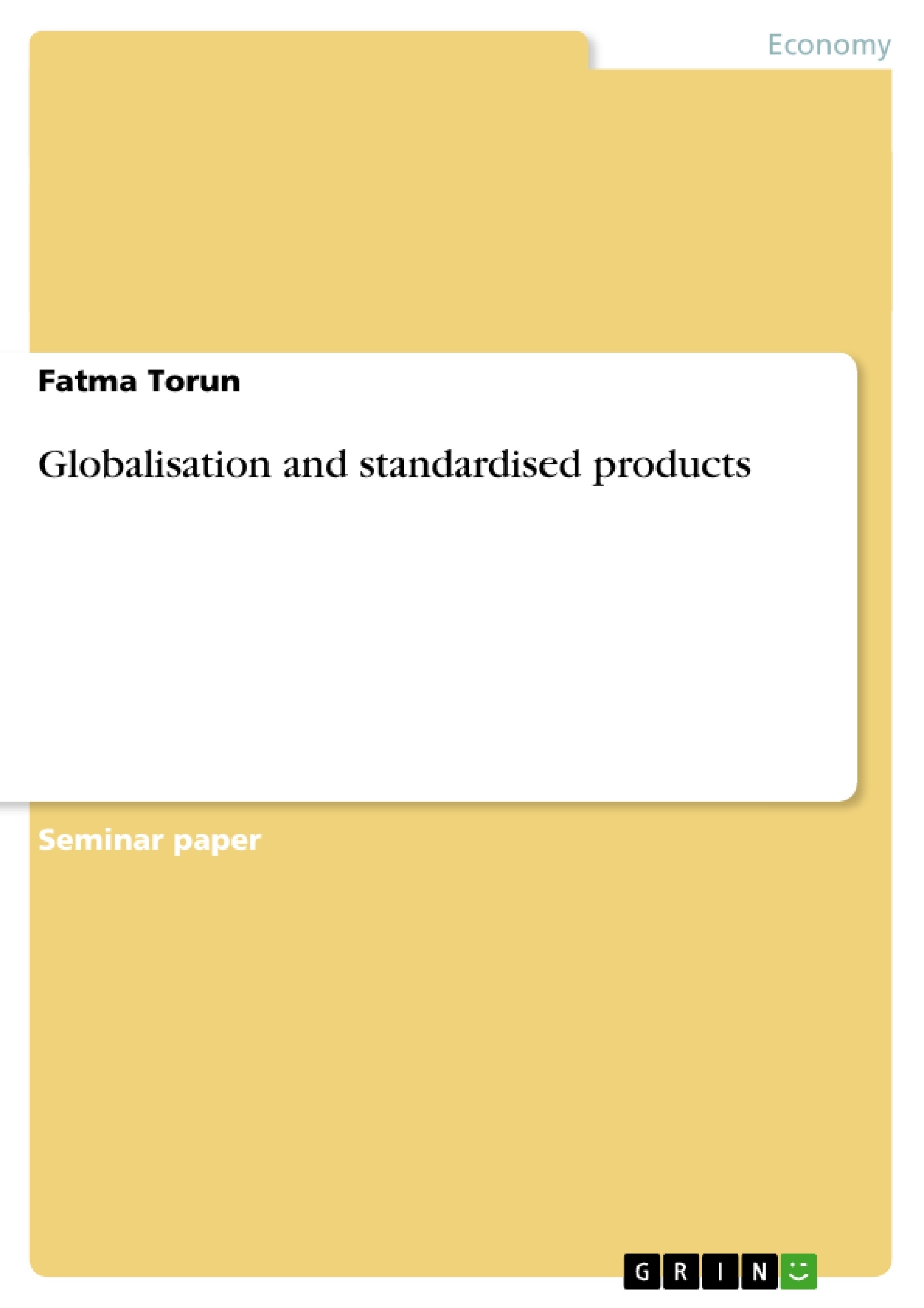The products, services, and brands of transnational companies of mainly North American origin are flooding almost every part of the world. The so-called “McDonaldisation” transforms different national economies into one global, interdependent market (Ritzer, 2003). McDonald, Coca-Cola and Levi are compelling symbols of the North American lifestyle, representing modernity, convenience and enjoyment. They have enormous influence across political, ethnic, and social boundaries. This combination of ideological appeals, symbolic values, and product quality imply the power these companies maintain in their brands and products, which impact cultures in various contexts (Gajender et al., 2001). But does economic integration mean also cultural integration? It is possible that long existing and diverse nations, with different histories and cultures, tastes, behaviours and ideas change within a short period of time and fit into the market structure of big companies? The aim of this brief essay is to discuss critically the fundamental background of this question and its key implications.
Table of Contents
- I. Introduction
- II. Critical view of the Concept of Standardisation and Globalisation
- 2.1 The Standardisation concept by Levitt
- 2.2 Globalisation and global strategies
- III. Culture and Globalisation
- 3.1 The Global Culture
- 3.2 Glocalisation: Towards positive globalisation
- IV. Summary and Conclusions
Objectives and Key Themes
This essay critically examines the concept of standardization and globalization, specifically questioning whether economic integration necessitates cultural integration. It aims to discuss the fundamental background of this question and its key implications.
- The standardization concept of Theodore Levitt and its critiques.
- Globalization as a process integrating economies, cultures, and technologies.
- The relationship between globalization and cultural homogenization.
- The role of multinational corporations in shaping global markets.
- The concept of "glocalization" as a response to globalization.
Chapter Summaries
I. Introduction: The introduction sets the stage by highlighting the increasing global presence of North American companies and brands, exemplified by the "McDonaldization" of global markets. It emphasizes the significant influence these brands have across various cultural and political boundaries, posing the central question: Does economic integration inevitably lead to cultural homogenization? The essay's aim is to critically analyze this question and its implications.
II. Critical view of the Concept of Standardisation and Globalisation: This chapter delves into a critical analysis of Theodore Levitt's concept of standardization, focusing on his three main arguments: homogenous customer needs, willingness to sacrifice preferences for lower prices, and achievable economies of scale through global supply. The chapter refutes these arguments by presenting evidence of diverse consumer behaviors, the importance of product quality over price, and the limitations of economies of scale due to factors like flexible factory automation and high transportation costs. It highlights the need for a nuanced approach to global marketing strategies, considering both common market characteristics and national differences.
III. Culture and Globalisation: This chapter would explore the complex interplay between culture and globalization. It likely discusses the emergence of a global culture, analyzing its characteristics and impact on local cultures. The concept of "glocalization," adapting global products to local contexts, would be a key theme here. The chapter would examine successful strategies employed by multinational companies to navigate cultural differences in their marketing and product development.
Keywords
Globalization, standardization, cultural homogenization, glocalization, global marketing strategies, multinational corporations, Theodore Levitt, consumer behavior, economies of scale, product quality, cultural integration, economic integration.
Frequently Asked Questions: A Critical View of Standardization and Globalization
What is the main topic of this essay?
The essay critically examines the relationship between economic integration (globalization) and cultural integration (homogenization). It questions whether economic globalization inevitably leads to a uniform global culture, exploring the concept of standardization in marketing and its implications.
What are the key themes explored in the essay?
Key themes include: Theodore Levitt's standardization concept and its critiques; globalization as a process integrating economies, cultures, and technologies; the relationship between globalization and cultural homogenization; the role of multinational corporations; and the concept of "glocalization" as a response to globalization.
What is Theodore Levitt's concept of standardization, and how is it critiqued in the essay?
Levitt argued for standardized global products based on homogenous consumer needs, a willingness to sacrifice preferences for lower prices, and achievable economies of scale. The essay critiques these arguments by highlighting diverse consumer behaviors, the importance of product quality, and the limitations of economies of scale due to factors like flexible automation and high transportation costs.
What is the concept of "glocalization," and how does it relate to globalization?
"Glocalization" refers to adapting global products or strategies to local contexts. The essay explores this concept as a response to the challenges and potential negative consequences of cultural homogenization driven by globalization. It suggests that successful multinational corporations adapt their approaches to account for cultural differences.
What is the essay's overall conclusion regarding the relationship between economic and cultural integration?
The essay doesn't explicitly state a single, definitive conclusion but rather offers a critical analysis of the complex interplay between economic and cultural integration. It challenges the assumption that economic globalization automatically results in cultural homogenization and highlights the importance of considering cultural nuances in global marketing strategies.
What are the main chapters covered in the essay?
The essay includes an introduction, a chapter critically analyzing standardization and globalization, a chapter exploring the relationship between culture and globalization, and a concluding summary.
What are some key examples used in the essay?
The essay uses the "McDonaldization" of global markets as an example of the increasing global presence of North American companies and brands and their significant influence across cultural and political boundaries.
What are the key words associated with this essay?
Key words include: Globalization, standardization, cultural homogenization, glocalization, global marketing strategies, multinational corporations, Theodore Levitt, consumer behavior, economies of scale, product quality, cultural integration, economic integration.
- Citation du texte
- Fatma Torun (Auteur), 2004, Globalisation and standardised products, Munich, GRIN Verlag, https://www.grin.com/document/32957




